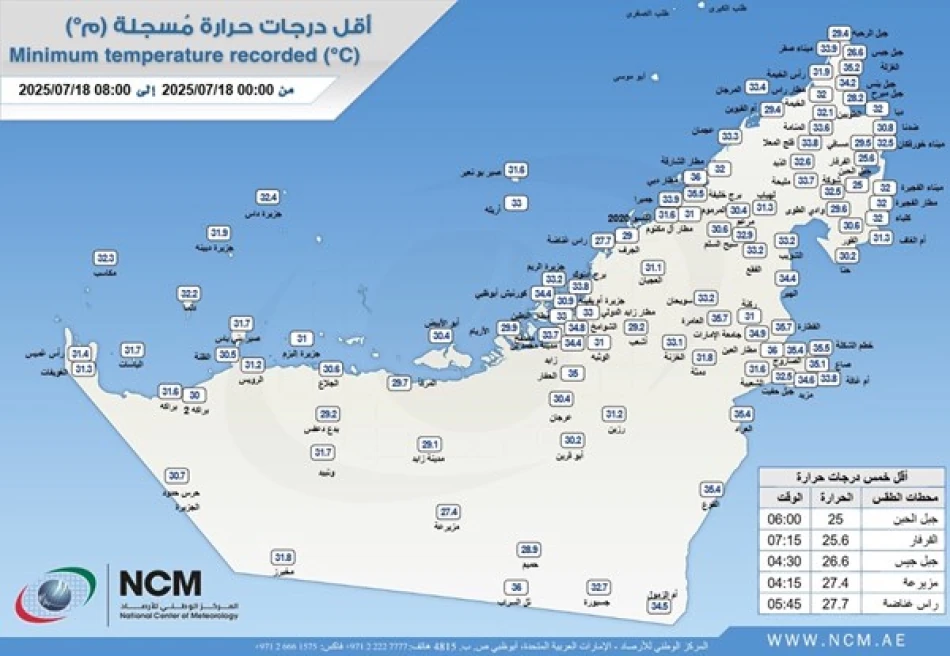
Icy Peaks: Jebel Al Habban Records Lowest Temperature in UAE
UAE Records Surprisingly Mild Winter Low of 25°C as Climate Patterns Shift
The UAE's National Center of Meteorology recorded the country's lowest temperature at just 25°C (77°F) this morning at Jabal Al-Haban in Fujairah, highlighting the nation's consistently warm climate even during winter months and raising questions about long-term temperature trends in the Arabian Peninsula.
Mountain Regions Offer Minimal Relief from Heat
The temperature reading, taken at 6:00 AM local time in the mountainous Fujairah emirate, represents the coolest spot across the entire UAE territory. Jabal Al-Haban, part of the Hajar Mountains that run along the UAE's eastern border with Oman, typically experiences the country's most moderate temperatures due to its elevation and distance from urban heat islands.
What makes this reading particularly noteworthy is that 25°C would be considered a comfortable room temperature in most parts of the world, yet it represents the UAE's winter minimum. This stark reality underscores the extreme climate conditions that define life in the Arabian Gulf region.
Regional Climate Context and Implications
The UAE's winter temperature patterns reflect broader climatic trends across the Gulf Cooperation Council states. While neighboring countries like Saudi Arabia and Oman can experience significantly cooler temperatures in their mountainous regions—sometimes dropping below 10°C—the UAE's compact geography and coastal influence maintain relatively stable warmth year-round.
Economic and Infrastructure Considerations
These consistently high temperatures have profound implications for the UAE's economy and urban planning. The country's massive energy consumption for cooling systems represents one of the highest per-capita rates globally, driving continued investment in renewable energy projects and nuclear power to meet demand sustainably.
The persistent heat also influences the UAE's positioning as a winter destination for tourists from colder climates, supporting a tourism industry that generates billions in revenue during the October-to-April season when temperatures are most bearable for outdoor activities.
Looking Ahead: Climate Adaptation Strategies
The UAE's experience with extreme heat has positioned it as a testing ground for climate adaptation technologies. From advanced building materials that reflect heat to innovative cooling systems and urban design principles, the country's approach to managing high temperatures offers lessons for other regions facing similar challenges due to climate change.
As global temperatures continue to rise, the UAE's current climate conditions may preview what other regions will experience in coming decades, making its adaptation strategies increasingly relevant for international observers and policymakers.
Most Viewed News

 Layla Al Mansoori
Layla Al Mansoori






